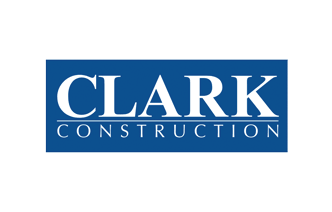Contractor Lien Waivers 101
As part of our continued collaboration with Levelset we're bringing their expertise to break down the different types of lien waivers and help you identify which ones make sense for your projects. Levelset is a cloud-based platform built to make lien rights easy, empowering a fair construction ecosystem that everyone can trust.

What You Need to Know About Lien Waivers
Lien waivers are tied to nearly every payment on a construction project, so almost everyone involved with construction work is familiar with these documents. However, they are so common that many companies view waivers as nothing more than a piece of paper that needs to be “rubber-stamped” to get paid. This practice is dangerous because not all waivers are created equal. Read on to learn how to distinguish between safe lien waivers that speed up the payment process, and those that expose the signing party to financial risk.
The Fundamentals of Lien Waivers
Signing a lien waiver waives lien rights. Once a contractor, supplier, or other party who provided materials or labor to a construction project waives lien rights, they are unable to file a mechanics lien in the event of nonpayment. Mechanics liens are incredibly powerful tools for combatting nonpayment, so it’s important to be careful when relinquishing lien rights.
All lien waivers fall into one of two categories: conditional or unconditional. Both these types of waiver can apply to either a partial or final payment. Read on to learn the differences between these types of waiver and best practices for managing them safely.
Conditional Lien Waivers: A Contractor’s Best Friend
Conditional lien waivers - whether for a partial payment or a final payment - are typically extremely beneficial for contractors, suppliers, and other parties who furnish labor or materials on construction projects. As the name implies, conditional lien waivers are conditioned upon the occurrence of an event, usually actual receipt of payment. This means that even after the waiver is signed, the signer maintains the right to file a mechanics lien until they get paid. Therefore, signing an unconditional lien waiver doesn’t expose the signer to financial risk.
Because conditional lien waivers are conditioned upon payment, contractors and suppliers can use them to their advantage. Proactively signing a conditional lien waiver prioritizes your invoice and motivates the paying party to make sure you get paid first. Those making payment would rather pay someone who has signed a waiver than one who hasn’t in order to avoid the risk of double payment. Furthermore, proactively signing conditional lien waivers speeds up the payment process by cutting down on time spent waiting to receive, sign, and return a waiver. Proactively initiating the waiver process with a conditional also ensures that you don’t sign an unconditional waiver prior to getting paid, which can be risky. Free online tools like the Waiver Exchange can be used to create, sign, and exchange custom waivers electronically.
Unconditional Lien Waivers: Sign With Care
Unlike conditional waivers, unconditional lien waivers go into effect and are fully enforceable as soon as they are signed, regardless of whether or not payment has been made. Signing an unconditional waiver eliminates the signer’s right to file a lien in future no matter what. Keep in mind that these waivers can apply to a partial payment (when further payment is expected in future) or a final payment.
An unconditional lien waiver should only be signed when the payment described in the waiver has been received. Here are a few reasons when not to sign an unconditional waiver:
- When the money isn’t in the bank. If the check hasn’t cleared, it’s a good idea to wait to sign or to provide a conditional waiver instead.
- When the amount stated in the waiver has not been received. When it comes to unconditional waivers, what is written in the waiver matters more than what has actually happened. If you are paid $5,000 but sign away lien rights for $10,000, you won’t be able to file a mechanics lien for the remaining balance owed.
- When dates don’t match. Lien waivers typically waive lien rights for work performed to date. Make sure that the dates in the waiver match the dates for which payment has been received.
Want to learn more about lien waiver best practices? Check out the simple guide to lien waivers.

 Olivia Huppman •
Olivia Huppman • 
















